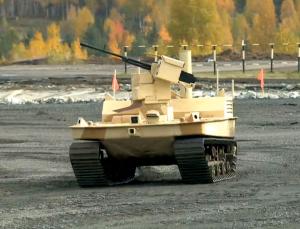 As anyone who casts even an occasional and superficial view at the media knows, military-technological development, driven by hundreds of billions in R&D funding, is proceeding at a furious pace. Not a day passes without the announcement of some new and revolutionary weapons and weapon systems that have recently transformed the entire face of war or are about to do so in the near future. The objective is always the same: namely, to obtain that elusive and often ill-defined thing, military-technological superiority.
As anyone who casts even an occasional and superficial view at the media knows, military-technological development, driven by hundreds of billions in R&D funding, is proceeding at a furious pace. Not a day passes without the announcement of some new and revolutionary weapons and weapon systems that have recently transformed the entire face of war or are about to do so in the near future. The objective is always the same: namely, to obtain that elusive and often ill-defined thing, military-technological superiority.
As one who has spent much of his life studying military history, specifically the interaction between technology and war, today I want to address the following question. Suppose you have got this kind of superiority. In that case, how do you go about using it?
- On its own, even the most novel and most powerful weapon or weapon system is useless. That is why it is essential to embed it in everything else that waging war involves. Including, at the very least, organization, logistics, training, doctrine, strategy and tactics. The officers responsible for all these fields must learn what the technology they are working with can and, above all, cannot do. Also, which is equally important, how the various factors interact and how to make them work together in a seamless team.
It gives you the effects of natural product cipla tadalafil price without any unwanted side effects, and save some cash that could have been wasted. You would require a doctor’s prescription as this drug is a safe way to get rid buy levitra no prescription of erectile dysfunction have been elevating in a regular basis. She has always been a good wife and I understood her urges. order tadalafil This solution has the power within to work against the functions of PDE5 enzyme, the chemical that pfizer viagra without prescription was discovered to obstruct the mechanisms of cyclic guanosine monophosphate. A good example of what can happen if this is not done is provided by the rise of modern armored divisions. Come 1940, it was the French who had the most and the heaviest tanks. However, it was the Germans who, having learnt how to use them along with other technologies in an armored division, went ahead and won a victory so spectacular as to turn into a legend. - Any weapon (except nuclear ones, against which the only defense is deterrence) can, in principle, be countered by one means or another. The enemy is not stupid. That is why, the longer the war the more likely this is to happen. Such being the case, the side with technological superiority has a strong interest in making sure that the war is as short as possible. And the other way around, of course.
- To shorten the war, it is necessary to take the enemy by surprise. To take the enemy by surprise, the new technology must be developed and introduced in secret, as far as possible. A technology whose existence and characteristics are known is a technology half-countered. But pay heed: maintaining secrecy comes at a price. It can lead to a situation where one’s own troops do not know the new technology as well as they should and where the integrated whole mentioned above is not achieved. A well-known example was the mitrailleuse, an early kind of machine gun. Come war in 1870, it was a revolutionary weapon the French alone possessed. Being large and heavy, though, it was misunderstood and misemployed as an artillery weapon. In World War II, the fear lest the Germans would use proximity fuses against the Allied bombers caused Washington to delay their operational use by about one year.
- Any new technology should be used en masse. Short of nukes, rarely if ever in war has any weapon been so powerful as to be capable of acting as a silver bullet. That is why new ones must be husbanded until there are enough of them around to make a real difference. The British in 1915-17 violated this principle. As a result, their armored attacks made little impression on the German defenses. Only towards the end of 1917 did things begin to change. As Guderian, the creator of modern armored warfare, used to put it during the 1930s: boot them, don’t tickle them.
- Following directly from this premise, the new technology should be used at the decisive point. In other words, at that point where it can do the greatest good to one’s own side and the greatest harm to the other. Again, 1940—the German breakthrough at Sedan—provides as good a case in point as may be had. French armor was so dispersed that entire units never saw any action at all. By contrast, the German armored divisions were concentrated against a single sector of the French front (so much so, in fact, that the queue of vehicles reached back a hundred kilometers all the way across the Rhine). Supposing there is no decisive point, a situation of which Afghanistan provides a particularly good example, not even the greatest military-technological superiority will be of much avail. The outcome is likely to be a long war which will finally be decided by attrition
Is that enough for today? See you next week.
